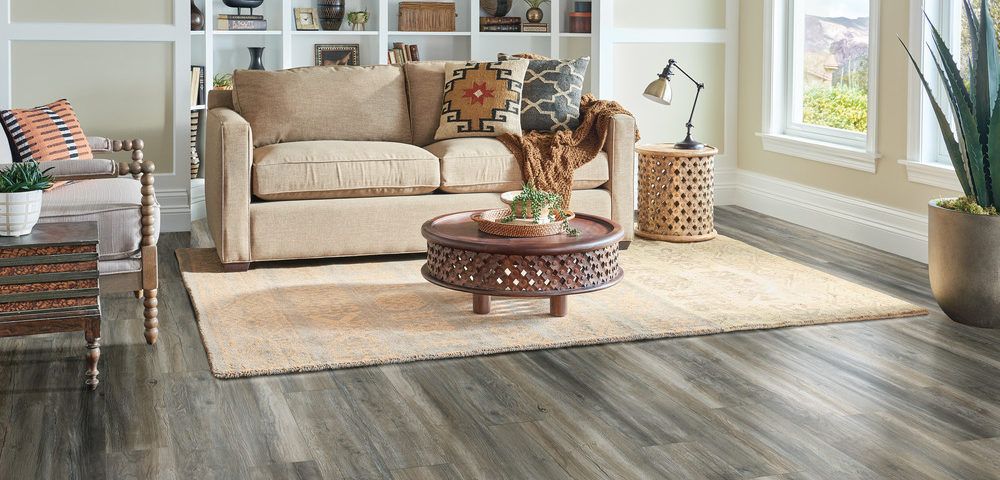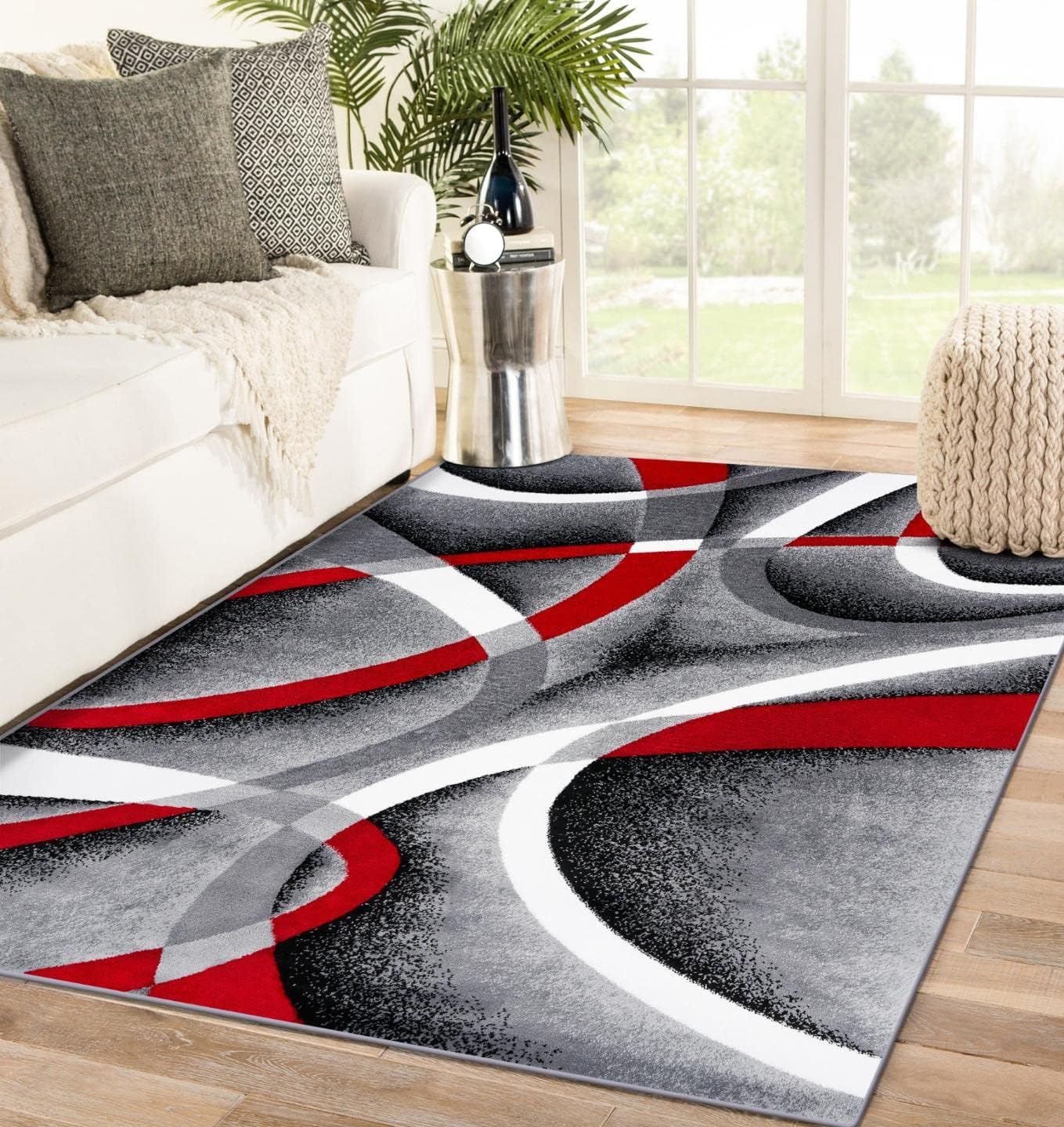LVP Flooring: The Popular Choice for Durability, Water Resistance, and Easy Maintenance

Looking to upgrade your flooring? Look no further than LVP flooring! With its reputation for durability, water resistance, and easy maintenance, it's no wonder why LVP flooring has become so popular.
But don't forget about the finishing touch - a rug! A natural fiber rug, wool rug, cotton rug, flatweave rug, or vintage/distressed rug is the perfect addition to your LVP flooring.
Choosing the right size and style of rug can help achieve balance in your living room and create a cohesive look in your space. From Scandinavian to bohemian, transitional to traditional, there's a rug style to complement your LVP flooring. And don't forget about regular cleaning and maintenance to protect your vinyl flooring. With the right rug and proper care, you can enjoy the durability and beauty of LVP flooring for years to come.
Understanding LVP Flooring
LVP, or Luxury Vinyl Plank, flooring is a popular choice among homeowners and designers alike. It is known for its durability, water resistance, and easy maintenance.
LVP flooring is designed to mimic the look of hardwood flooring but at a more affordable price point. It is made of multiple layers of vinyl, with a printed design layer that replicates the appearance of wood.
The manufacturing process of LVP flooring involves heat and pressure to fuse the layers together, creating a durable and long-lasting product.
Durability of LVP Flooring
One of the key advantages of LVP flooring is its exceptional durability. It is designed to withstand heavy foot traffic and daily wear and tear. On average, LVP flooring can last up to 20 years or more, depending on the quality of the product and the level of maintenance it receives.
The durability of LVP flooring is further enhanced by its scratch and stain resistance properties. Unlike hardwood flooring, LVP can resist scratches from pets, furniture, and everyday activities. It is also less likely to fade or discolor over time, making it an ideal choice for high-traffic areas in the home.
When comparing the durability of LVP flooring with other types of flooring, such as laminate or carpet, LVP often comes out on top. Unlike laminate flooring, which is susceptible to water damage, LVP is waterproof and can be installed in areas prone to moisture, such as bathrooms and kitchens.
Additionally, LVP is more durable than carpet, which can easily wear down and stain over time. The versatility and resilience of LVP flooring make it a reliable and long-lasting flooring option for any home.
Water Resistance of LVP Flooring
One of the standout features of LVP flooring is its exceptional water resistance. This makes it an ideal choice for areas of the home that are prone to spills and moisture, such as kitchens, bathrooms, and basements. The water resistance of LVP flooring is due to its layered construction and tight locking system that prevents water from seeping through the seams. This feature not only protects the flooring from potential damage but also makes it easier to clean and maintain.
The benefits of the water resistance aspect of LVP flooring are numerous. Firstly, it provides peace of mind knowing that accidental spills and leaks will not result in permanent damage to the flooring. LVP can withstand water exposure without warping, swelling, or discoloration, making it a practical choice for households with children or pets.
Additionally, the water resistance property of LVP flooring makes it a hygienic option for spaces where cleanliness is a top priority, such as kitchens and bathrooms. It is easy to wipe up spills and keep the flooring looking fresh and clean.
Testimonials from users of LVP flooring often highlight the advantages of its water resistance. Many homeowners have praised LVP for its ability to withstand heavy use and its resilience against water-related incidents. Whether it's a spilled glass of juice, a pet's accident, or a plumbing mishap, LVP flooring has proven to be a reliable and long-lasting choice.

Easy Maintenance of LVP Flooring
Another reason why LVP flooring is a popular choice among homeowners is its ease of maintenance. Compared to other types of flooring, such as hardwood or carpet, LVP requires minimal effort to keep it looking clean and well-maintained. The following steps can help you maintain the appearance and extend the lifespan of your LVP flooring:
- Regular sweeping or vacuuming: Remove loose dirt and debris from the surface of the flooring using a soft-bristle broom or a vacuum cleaner with a hard floor setting. This will prevent scratches and keep the flooring looking fresh.
- Spot cleaning: If there are any spills or stains, clean them up immediately. Use a mild detergent or LVP-approved cleaner and a damp cloth to gently wipe away the mess. Avoid using harsh chemicals or abrasive cleaners, as they can damage the flooring.
- Deep cleaning: Periodically, you may want to give your LVP flooring a more thorough cleaning. You can use a damp mop with a LVP-approved cleaner to remove any dirt or grime that has built up. Be sure to wring out the mop thoroughly to avoid excessive moisture on the flooring.
- Preventive care: To protect your LVP flooring from scratches and dents, consider placing felt pads on the bottom of furniture legs and using rugs or mats in high-traffic areas. This will help distribute weight and prevent unnecessary wear and tear.
By following these simple steps, you can ensure that your LVP flooring remains in excellent condition for years to come.
Choosing Rugs for LVP Flooring
While LVP flooring offers a durable and attractive option for your home, adding rugs can further enhance the overall aesthetic and comfort level of your space. Rugs not only add warmth and texture but also provide protection for your LVP flooring. When choosing rugs for LVP flooring, consider the following factors to make the best choice for your home:
- Material: Natural fiber rugs, such as jute, sisal, or seagrass, are recommended for LVP flooring. These materials are durable, sustainable, and add a textural element to your space. Wool rugs are also a popular choice as they are soft, resilient, and naturally stain-resistant. Cotton rugs and flatweave rugs are other options that work well with LVP flooring.
- Size: Consider the size of your room and the arrangement of your furniture when choosing a rug. A rug that is too small can make the space feel disjointed, while a rug that is too large can overwhelm the room. It's important to find the right balance and ensure that the rug fits well within the designated area.
- Style: The style of the rug should complement the overall design of your space. LVP flooring offers a versatile backdrop for various rug styles, such as Scandinavian, bohemian, transitional, and traditional. Choose a rug that harmonizes with the colors and patterns in your room to create a cohesive look.
By carefully selecting the material, size, and style of your rugs, you can enhance the beauty of your LVP flooring and create a comfortable and inviting space.
Determining the Right Rug Size
Choosing the right rug size is essential for achieving balance and proportion in your living room. The size of the rug can significantly impact the overall look and feel of the space. Here are some factors to consider when determining the right rug size for your room:
- Importance of balance: A rug that is too small can make the furniture and the room feel disconnected. On the other hand, a rug that is too large can overpower the space and make it feel cramped. It's essential to find the right balance where the rug anchors the furniture and creates a cohesive and harmonious look.
- Impact on the room's proportions: The size of the rug can affect the perception of the room's size and proportions. A rug that is too small for the space can make the room appear smaller, while a well-sized rug can help define the seating area and make the room feel more spacious. Consider the dimensions of your room and the intended use of the space when selecting a rug size.
- Measuring your room: To ensure that you choose the correct rug size, measure your room and take note of the furniture layout. Use a measuring tape to determine the length and width of the area you want to cover with a rug. It's generally recommended to leave at least 18 inches of bare floor exposed around the edges of the room to create a visually appealing balance.
By taking the time to measure your room and carefully assess the furniture layout, you can select a rug size that enhances the overall design and functionality of your living room.
Different Styles of Rugs for LVP Flooring
Rugs come in various styles, and choosing the right one can greatly enhance the aesthetic appeal of your LVP flooring. Here are a few popular rug styles that complement LVP flooring:
- Scandinavian: Scandinavian design emphasizes simplicity, functionality, and minimalism. A Scandinavian rug often features a neutral color palette, geometric patterns, and clean lines. These rugs work well with LVP flooring, as they add a touch of modern elegance and enhance the overall Scandinavian aesthetic.
- Bohemian: Bohemian or boho rugs are known for their vibrant colors, intricate patterns, and eclectic style. These rugs can add a pop of personality and whimsy to your LVP flooring. Whether you opt for a Persian-inspired rug or a Moroccan-inspired design, a bohemian rug can create a sense of warmth and inviting charm in your space.
- Transitional: Transitional rugs blend traditional and contemporary elements, making them a versatile choice for LVP flooring. These rugs often feature a combination of classic motifs and modern color palettes. A transitional rug can help bridge the gap between different design styles and create a cohesive look in your room.
- Traditional: Traditional rugs are timeless and can add a sense of elegance and sophistication to your LVP flooring. These rugs typically feature intricate patterns, rich colors, and a plush pile. Whether you prefer an Oriental rug, a Persian rug, or a European-inspired design, a traditional rug can bring a sense of grandeur and refinement to your space.
By selecting a rug style that complements your LVP flooring, you can create a harmonious and visually appealing environment that reflects your personal style.
The Role of Rugs in Space Definition
Rugs play a crucial role in defining and organizing spaces within your home. They not only add warmth and comfort to a room but also help create distinct areas and zones. Here are a few ways in which rugs can be used to define different spaces:
- Area rugs for larger spaces: In an open-concept floor plan or a large room, an area rug can help define different functional areas. For example, in a living room, a rug can be used to anchor the seating area, creating a cozy and intimate space within the larger room. By placing furniture on the rug, you visually designate the area as a separate zone for relaxation and conversation.
- Runner rugs for long and narrow spaces: In long hallways or narrow rooms, runner rugs are a practical choice. These long, narrow rugs can visually elongate the space and create a sense of flow. They can also serve as a protective layer for your LVP flooring in high-traffic areas, such as entryways or corridors.
- Door mats and small rugs for specific uses: Door mats and small rugs have specific purposes in the home. Door mats placed at entrances help keep dirt and debris from being tracked onto your LVP flooring. Small rugs can be used in front of sinks, next to beds, or as accent pieces in smaller areas. These rugs add comfort and style while serving a functional purpose.
By strategically placing rugs in different areas of your home, you can define spaces, create visual interest, and enhance the functionality of each area.
Maintaining Rugs on LVP Flooring
Regular cleaning and maintenance of rugs are essential for their longevity and for protecting your LVP flooring. Here are some tips to help you properly care for your rugs:
- Regular vacuuming: Vacuum your rugs on a regular basis to remove any dirt, dust, or debris that may accumulate. A vacuum cleaner with a brush attachment is ideal for this purpose. Be sure to vacuum both sides of the rug to thoroughly remove any trapped dirt.
- Spot cleaning: Take immediate action to clean up any spills or stains on your rugs. Blot the affected area gently with a clean cloth or paper towel to absorb as much liquid as possible. Avoid rubbing the stain, as this can cause it to spread. Use a mild detergent or rug cleaner specifically designed for your type of rug to treat the stain. Follow the manufacturer's instructions and test the cleaner on a small, inconspicuous area of the rug first to ensure it does not cause any discoloration.
- Professional cleaning: Depending on the material and condition of your rug, it may be necessary to have it professionally cleaned. Professional rug cleaning services can deep-clean your rugs, removing embedded dirt and restoring their original beauty. Consult with a professional cleaner to determine the best course of action for your specific rug.
- Using rug pads and grippers: To prevent rugs from sliding or shifting on your LVP flooring, consider using rug pads or grippers. These accessories provide stability and help protect your flooring from scratches. Rug pads also provide additional cushioning and can extend the lifespan of your rugs.
By maintaining your rugs regularly and following proper cleaning techniques, you can ensure that they continue to enhance the beauty of your LVP flooring for years to come.
Preventing Rug Damage on Vinyl Flooring
While rugs can add style and functionality to your vinyl flooring, it's important to take precautions to prevent any potential damage. Here are some tips to protect your vinyl flooring from rug-related issues:
- Choose breathable rugs and rug pads: Avoid using rubber-backed or non-breathable rugs on your vinyl flooring. These can trap moisture and potentially cause discoloration or damage to the flooring. Instead, opt for breathable rugs made of natural fibers, such as cotton or wool. Similarly, choose rug pads that allow air to circulate freely and are specifically designed for use on vinyl flooring.
- Non-staining rugs and rug pads: Certain dyes and pigments in rugs or rug pads can transfer to vinyl flooring and cause permanent staining. To prevent this, choose rugs and rug pads that are labeled as non-staining. These products have undergone testing to ensure that they do not contain any harmful substances or pigments that could damage your vinyl flooring.
- Deal with common rug-related issues: Be mindful of common rug-related issues that can occur on vinyl flooring. For example, the backing of some rugs may contain chemicals that react with the vinyl flooring, causing discoloration or stickiness. If you notice any discoloration or adhesive residue on your vinyl flooring, remove the rug and clean the affected area immediately. If the issue persists, consult a professional for assistance.
By taking these preventative measures, you can enjoy the benefits of rugs on your vinyl flooring without worrying about potential damage or staining.
Conclusion
In conclusion, LVP flooring offers a durable, water-resistant, and easy-to-maintain option for homeowners. Its longevity, scratch and stain resistance, and affordability make it a practical choice for various areas in the home.
When choosing rugs for LVP flooring, consider the material, size, and style that will create a harmonious and visually appealing look. Rugs not only enhance the aesthetic appeal of LVP flooring but also help define and organize spaces within your home.
By following proper cleaning techniques and taking precautions to prevent any potential damage, you can ensure that your rugs and LVP flooring remain in excellent condition for years to come.


